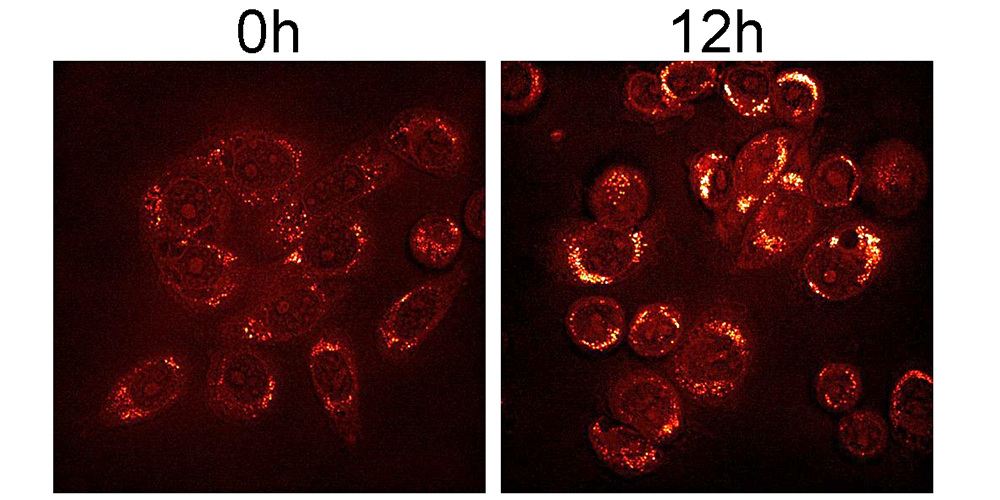Starved to death: Can dietary methionine combat cancer?
The organic compounds that come together to form proteins are called amino acids. The human body uses amino acids as sources of energy for functions such as homeostasis, growth, and repair. While the body can produce some amino acids (known as nonessential), others are strictly obtained through food (known as essential).
The essential amino acid methionine, or Met, is critical for genetic regulation, protein production, cell metabolism and DNA repair. Unlike noncancerous cells, most cancer cells cannot recycle Met efficiently; instead, cancer cells rely on a continuous supply of methionine from external sources for growth. This vulnerability is known as Met dependence, or Met stress sensitivity.
Researchers do not know much yet about the mechanisms behind Met dependence in cancer; however, a recent study published in the Journal of Lipid Research has brought us closer to understanding the role of Met dependence in cancer cell lipid metabolism. Peter Kaiser of the University of California, Irvine, and collaborators at the University of California, Davis, Metabolomics Center and University of Texas MD Anderson Cancer Center used Met-dependent and Met-independent breast cancer cell lines to characterize the lipid changes that occur in response to Met-dependent stress.

In the cell, diverse lipids make up the cellular membrane and aid in signaling and transport; lipids are also important for nutrient and energy storage. While lipid metabolism is studied widely in relationship to heart disease, researchers know little about lipid metabolism in cancer.
“In cancers, specifically in breast cancer, there has always been a connection to lipid metabolism,” Kaiser said. “We are very interested in understanding how these changes in lipids can affect cancer cells and how they can translate into feasible drug targets.”
Kaiser and colleagues fed cancer cells Met-deficient media to induce stress and then used high-performance liquid chromatography, genetic analysis, and cell microscopy to characterize the changes that occurred in lipids. The researchers found that lipid remodeling and abundance are affected directly by Met-deprivation stress in cancer cells.
Compared to the Met-independent cells (which do not require externally provided Met), the researchers saw an accumulation of lipid droplets, a decrease in lipid synthesis, and a global decrease in all lipid types (except triglycerides; these underwent remodeling), in the Met-dependent cancer cells (which require a continuous external supply of Met). These changes suggest Met stress may affect the endoplasmic reticulum, or ER, an organelle in the cell responsible for many metabolic processes, including lipid synthesis.
“A lot of proteins are folded in the ER,” Kaiser said. “This can lead to a stress response because protein folding becomes impacted in the ER as a consequence of the changes occurring to the lipids.”
These findings support a previous study in which reduced dietary Met helped shrink tumors in rats when used in conjunction with radiation or chemotherapeutics.
Kaiser and his colleagues seek to understand the molecular mechanisms involved in cancer Met dependence. His lab is also interested in the relationship between Met dependence and cell cycle regulation. These studies could increase knowledge of the unique metabolic needs of cancer cells and lead to better therapies.
Enjoy reading ASBMB Today?
Become a member to receive the print edition four times a year and the digital edition monthly.
Learn moreGet the latest from ASBMB Today
Enter your email address, and we’ll send you a weekly email with recent articles, interviews and more.
Latest in Science
Science highlights or most popular articles

The science of staying strong
Muscles power every movement, but they also tell the story of aging itself. Scientists are uncovering how strength fades, why some species resist it and what lifestyle and molecular clues could help preserve muscle health for life.

Bacteriophage protein could make queso fresco safer
Researchers characterized the structure and function of PlyP100, a bacteriophage protein that shows promise as a food-safe antimicrobial for preventing Listeria monocytogenes growth in fresh cheeses.

Building the blueprint to block HIV
Wesley Sundquist will present his work on the HIV capsid and revolutionary drug, Lenacapavir, at the ASBMB Annual Meeting, March 7–10, in Maryland.

Gut microbes hijack cancer pathway in high-fat diets
Researchers at the Feinstein Institutes for Medical Research found that a high-fat diet increases ammonia-producing bacteria in the gut microbiome of mice, which in turn disrupts TGF-β signaling and promotes colorectal cancer.

Mapping fentanyl’s cellular footprint
Using a new imaging method, researchers at State University of New York at Buffalo traced fentanyl’s effects inside brain immune cells, revealing how the drug alters lipid droplets, pointing to new paths for addiction diagnostics.

Designing life’s building blocks with AI
Tanja Kortemme, a professor at the University of California, San Francisco, will discuss her research using computational biology to engineer proteins at the 2026 ASBMB Annual Meeting.

